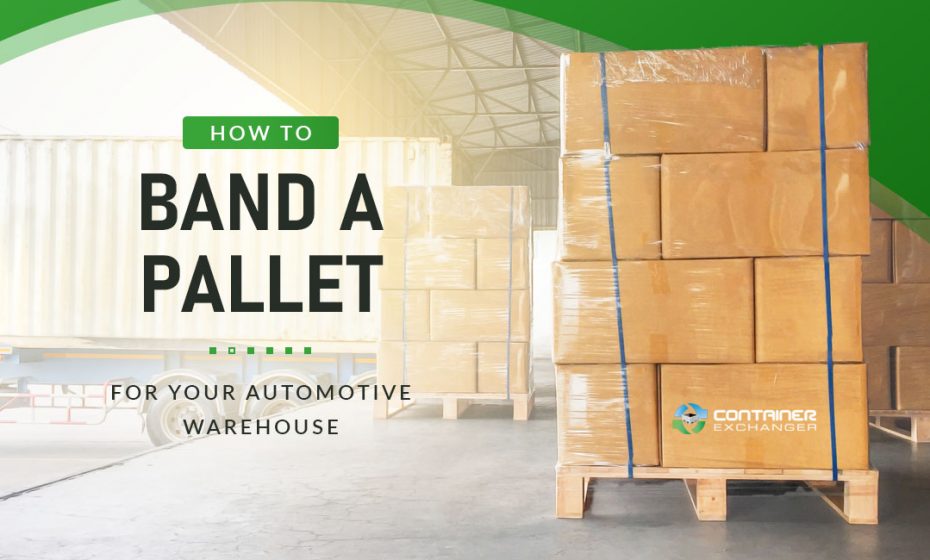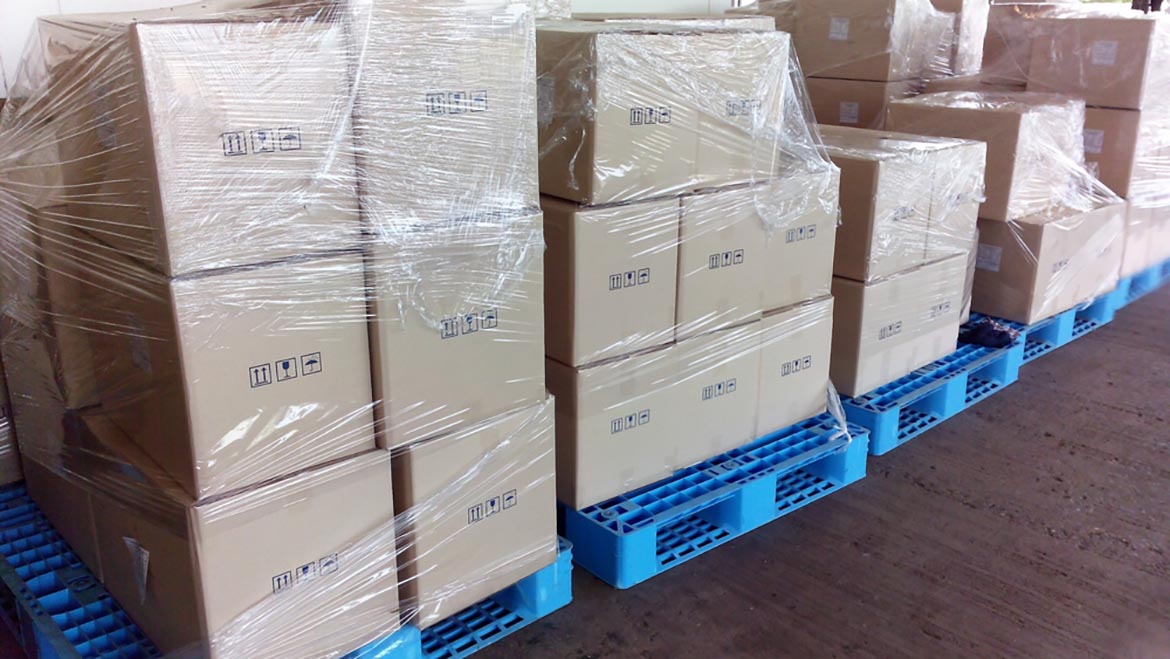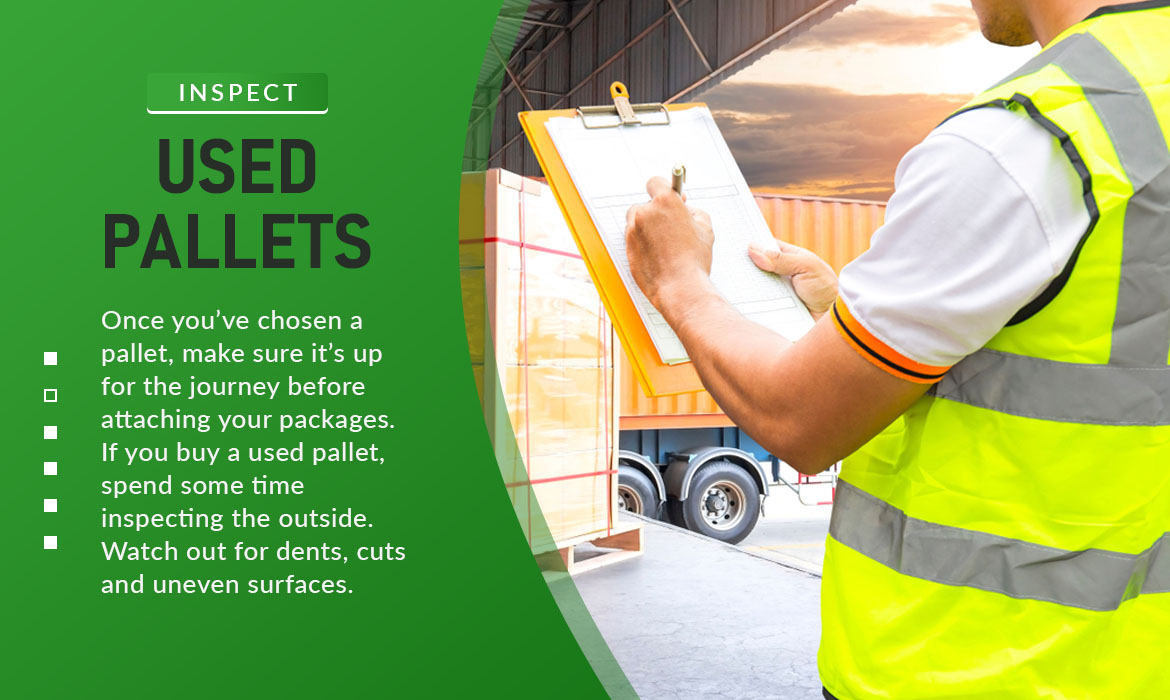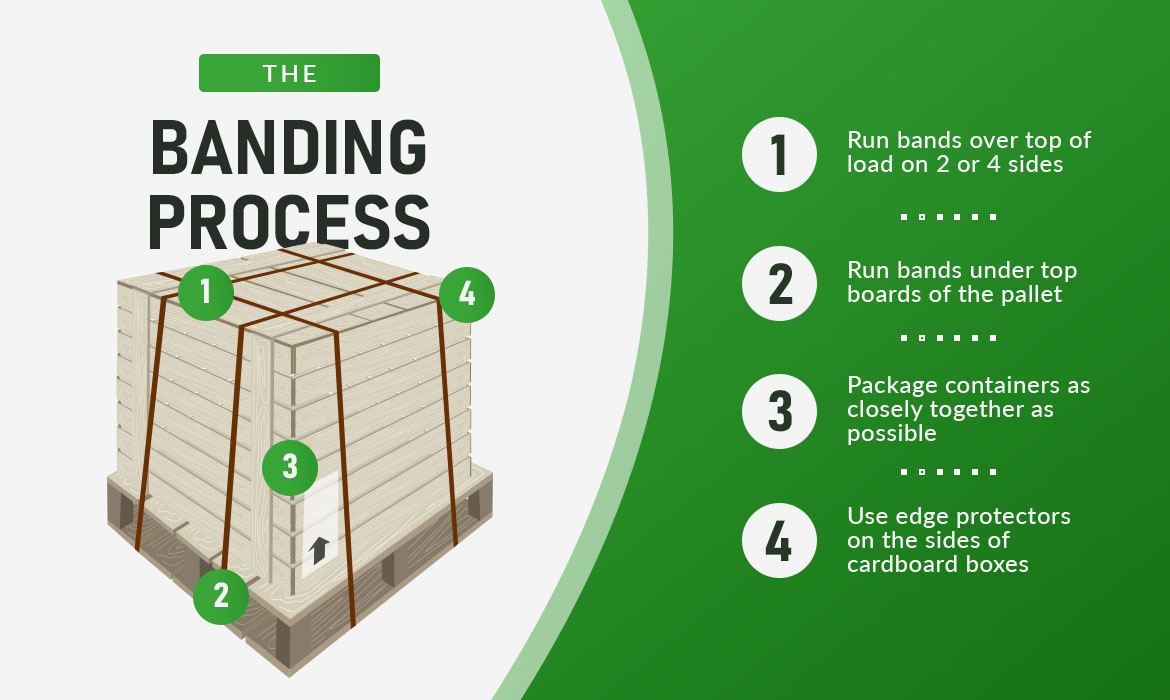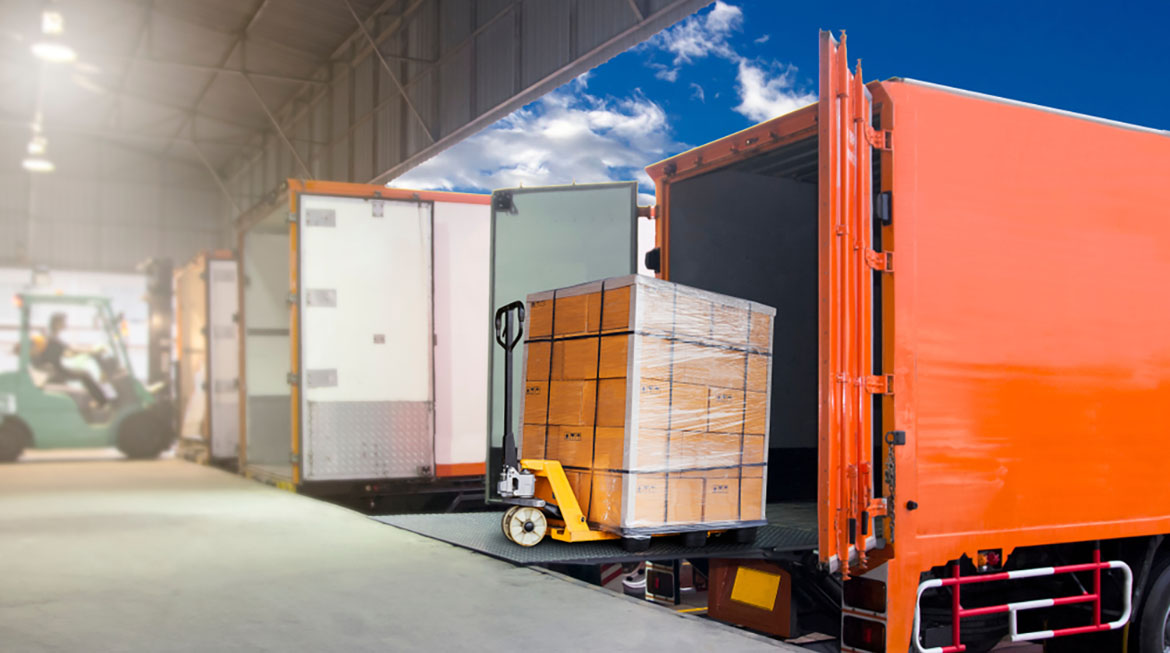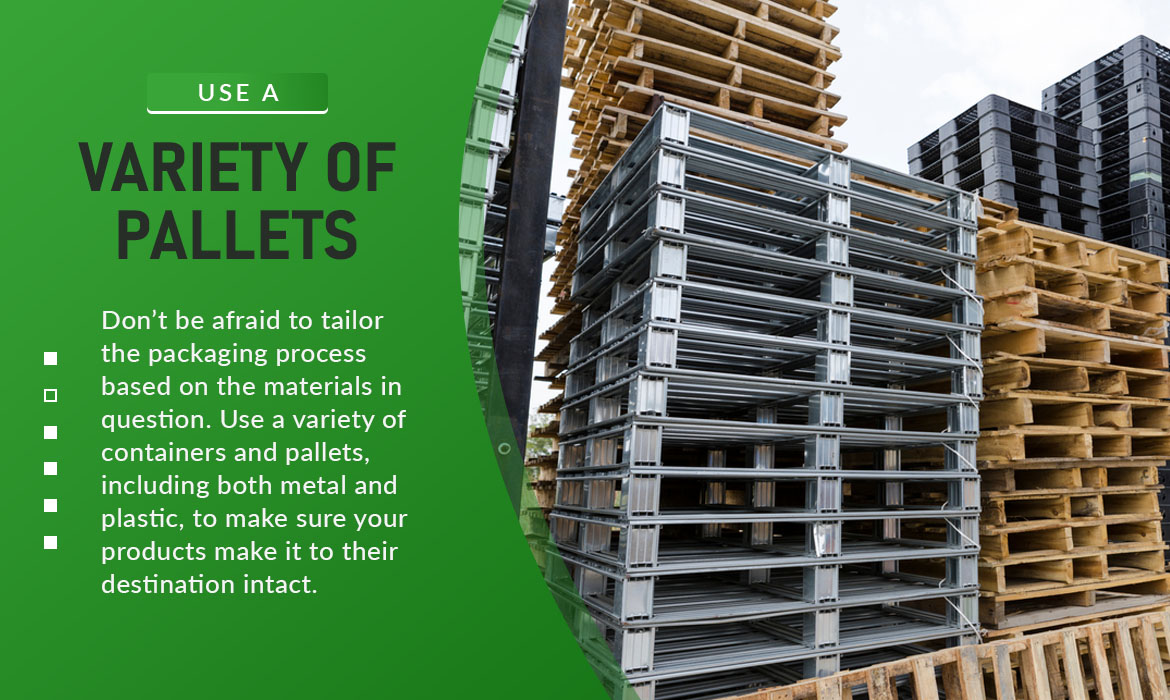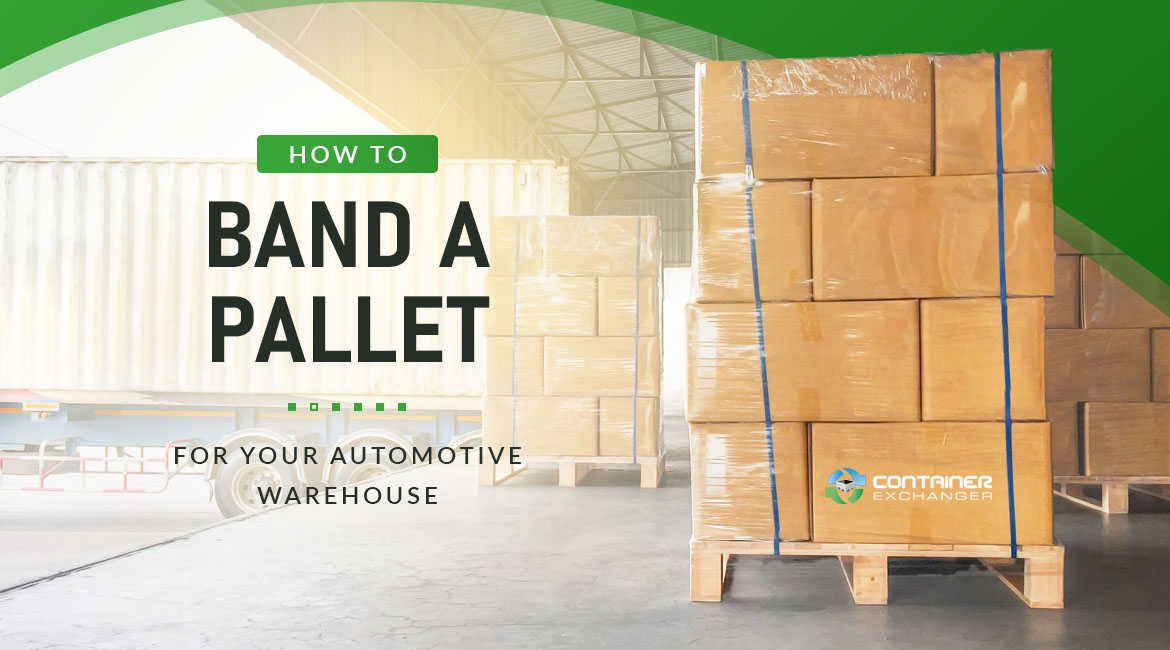
The automotive industry is on track to sell and ship 69 million cars this year alone. Behind every make and model, there are tens of thousands of individual parts. From the latest smart computers to bulky items, nothing could be more important than making sure your goods and parts arrive at their destination safely. One mistake can tarnish your reputation as a manufacturer or distributor, leading to costly delays up and down the supply chain.
Pallets are used to ship just about every type of product on the planet, including car parts and machinery. This isn’t the same as sending a freight of consumer goods across long distances. Every part and piece must be carefully packaged to make sure the finished product works properly. The slightest nick or dent could render your merchandise useless.
From quick drop-offs to international trips, learn how to band a pallet in the automotive industry to keep your products intact every step of the way.
Choosing a Pallet
It all starts with the right pallet. You have plenty of options to choose from, but it really depends on the merchandise in question. Cars contain dozens of different parts and materials, including everything from tiny nuts and bolts to wide aluminum frames and luxurious leather.
For multiple packages, plastic and leather, we recommend using plastic pallets, especially when shipping overseas. Plastic pallets are lightweight and reusable to help you keep your shipping costs as low as possible. You don’t have to keep buying new shipping materials every few weeks. Plastic pallets retain their dimensions for years on end without spreading debris.
Wood pallets tend to break and fall apart fairly easily, which leads to the spread of wood chips, dust and other debris. This makes it harder for your employees to navigate the space. Airborne particles can also reduce air quality. Wood pallets will warp or bend if exposed to the elements. Sudden changes in temperature can also affect the dimensions of your pallets, as the wood expands and contracts.
Don’t forget: All wood pallets must be inspected by customs according to ISPM-15 to prevent the spread of wood-borne pests and bacteria. Your packages may get held up at port when they reach customs, adding to the delivery timeline.
For large metal parts, such as frames and doors, we recommend using metal pallets. Large pieces of metal may scrape or chip away at your wood and plastic pallets. It’s best to pair metal with metal unless these items are encased in a box or pallet container. A metal pallet will hold up against scrapes and bumps so you can transport these items with more peace of mind.
Need a Pallet Container? Order One Today!
Choose your pallet wisely. Remember that your shipment may take weeks, if not months, to arrive, depending on the destination. Auto shipping usually means playing the waiting game, so choose a pallet that won’t break down during long trips or in outdoor environments.
Preparing the Pallet
Once you’ve chosen a pallet, you need to make sure it’s up for the journey before attaching your goods and packages. If you buy a used pallet, spend some time inspecting the outside. Watch out for dents, cuts and uneven surfaces that may put your inventory at risk. Be sure to wash off the pallet with water and vinegar to get rid of nasty stains, sticky surfaces and other debris.
Repeat this process before and after each trip when reusing your pallets. Store them in a dry, room temperature location to keep them in great shape for years to come.
You should never put a load on a pallet unless it’s been properly inspected. Choose quality pallets made with durable materials to give yourself some added peace of mind.
Find pallets for sale with informative, accurate descriptions so you don’t end up with an older pallet that’s already seen its best days.
Choosing a Container for Your Pallet
Now, let’s make sure you’re using the right pallet container for your merchandise.
It’s best to use a pallet container for your automotive merchandise. Pallet containers are specially designed to fit onto a pallet. They usually have the same dimensions, so you don’t have to worry about the load exceeding the sides of the pallet.
Again, try to match your materials. If you’re using a plastic pallet container, use a plastic pallet for a smooth fit. The same goes for metal containers and pallets. Avoid putting a metal container onto a plastic pallet, as it may dent or scrape the underlying surface.
Collapsible containers are always a great choice in the automotive industry. If your facility has dozens of shipments coming in and out on any given day, use collapsible containers to free up additional space. Your employees can break down these containers in a matter of seconds before setting them aside or stacking them on a rack.
Loading the Pallet
Once you have the right container, it’s time to attach your load. Always refer to the weight limit before loading on your merchandise. Most pallets can hold up to 4,600 pounds, but this varies based on the size and material. Do not overload your pallet. The container should also be smaller or have the same dimensions as the pallet.
When packing your container, put the heaviest items on the bottom to make the entire load more stable. Keep the weight centered as much as possible for easy handling or the load may tip to one side. Put the lightest loads on top. Consider the dimensions of the delivery vehicle and loading dock to make sure the pallet doesn’t get stuck along the way.
Banding the Pallet
Banding the pallet means using rachet straps or tension bands to secure the load to the pallet. Start by running the bands over the top of the load on two or four sides. Run the bands under the top boards of the pallet to keep the entire load together.
The banding process all depends on the size and shape of your merchandise. If you have dozens of small cardboard boxes full of nuts, screws, caps and other tiny accessories, consider putting them in a large plastic bulk container instead of wrapping or banding them together. Keeping smaller packages in one container is the best way to make sure your merchandise stays together.
When loading multiple containers onto the same pallet, package them as closely together as possible. If there’s any space between your packages or containers, they may slip out the sides.
Use edge protectors on the sides of cardboard boxes before ratcheting up the tension or you may damage your merchandise. It’s better to use plastic or metal containers that can withstand the pressure for a tighter, more secure fit. The more durable your containers, the better off your merchandise will be.
Cut off the loose ends of the ratchet straps or secure them before moving on to the next step. Nothing should be hanging or dangling from the sides of your load.
Your team may want to practice this step several times before sending off your first shipment, considering the automotive industry comes with little room for error. Once you’ve put together a practice load, experiment handling the pallet with a lift truck to make sure it’s stable.
Our Plastic Pallets Are Durable Yet Affordable
Wrapping the Pallet
Before you hand off your pallet, consider wrapping it with shrink wrap, especially if you’re moving several containers at once. The ratchet straps are designed to keep your load attached to the pallet, but the plastic wrap will keep your packages together. It also reinforces the ratchet straps for more stability. Learn how to shrink wrap a pallet to keep all your packages together.
Your packages should already be packed together as tightly as possible using the ratchet straps. If you try to adjust them after applying the shrink wrap, the plastic won’t be effective.
Use one continuous piece of plastic for the entire process. Start by unrolling a yard of plastic wrap while squeezing the last portion into a rope shape. This allows you to thread the rope around the corner of the pallet. Once the wrap is firmly attached, use the unrolled plastic to cover the base of the pallet. You may need to go around four or five times until it’s thoroughly covered. Now, work upward until you cover the entire load. The plastic will stick to itself as you go, leaving you with one smooth package.
Keep the plastic wrap as smooth and taut as possible when wrapping. If the plastic is loose, it will start to unravel during transit. Continue wrapping the entire load several times over for a snugger fit.
Practice always makes perfect. Give your team time to practice the shrink wrap process before sending out your first order. When handling your test order, listen for any sliding, shaking or rattling inside your containers. The load should move as one entity with nothing shifting in place. Spend a few moments inspecting your work before sending it out for delivery.
Label the Load
Don’t forget to attach all your essential documents to the side of the load. Most warehouses will tape their documents to the plastic wrap with clear labels on all sides. Your freight may pass through dozens of checkpoints and facilities en route to its destination. It’s your job to make sure everyone can handle your inventory with care, regardless of where they work or what language they speak.
Last Looks
When handing off your package to another party, leave some time to fix any last-minute issues. Make sure the slots of the pallet are easily accessible for lift trucks. There should be nothing blocking the labels or slots, including dangling plastic, tape and other debris.
Put yourself in the shoes of a freight handler or customs officer when shipping overseas. Do your best to make things easy for anyone who might have to move your inventory down the line.
Thinking Long-Term
Automotive manufacturers aren’t known for their simplicity. Your facility may have to ship thousands of different products and accessories so don’t be afraid to tailor the packaging process based on the materials in question. Use a variety of containers and pallets, including both metal and plastic, to make sure your products make it to their destination intact.
In case you haven’t heard, the automotive industry is going green. The latest makes and models are designed to limit waste with an emphasis on sustainability, and your warehouse should do the same.
Plastic wrap, cardboard boxes, packaging peanuts and other disposable shipping materials will cost your business in more ways than you might expect. You will have to reorder more supplies on a weekly, if not daily, basis as demand ebbs and flows. You don’t want to get caught without plastic wrap when you need it most. Many of these materials will also wind up in the local landfill if not recycled correctly.
Utilize reusable shipping materials and containers to reduce waste and consumption. You won’t have to worry about constantly reordering more supplies or running out at the last minute. It only takes a few minutes to wash off used pallets and containers compared to all the effort that goes into breaking down cardboard boxes or cleaning up after wooden pallets.
Put individual parts and boxes inside bulk containers to reduce your dependence on shrink wrap and packing peanuts. Small changes can yield all kinds of savings down the line.
Use these tips to improve efficiency during the shipping process. If you take the proper precautions, you shouldn’t have to worry about your merchandise getting damaged or lost along the way. Your clients depend on you for your service and reliability. Consider changing the way you prepare your packages for the long road ahead.
Image Credits
Iamnee/shutterstock.com
Siwakorn1933/shutterstock.com
Atlantist Studio/shutterstock.com
mindroom14/shutterstock.com
